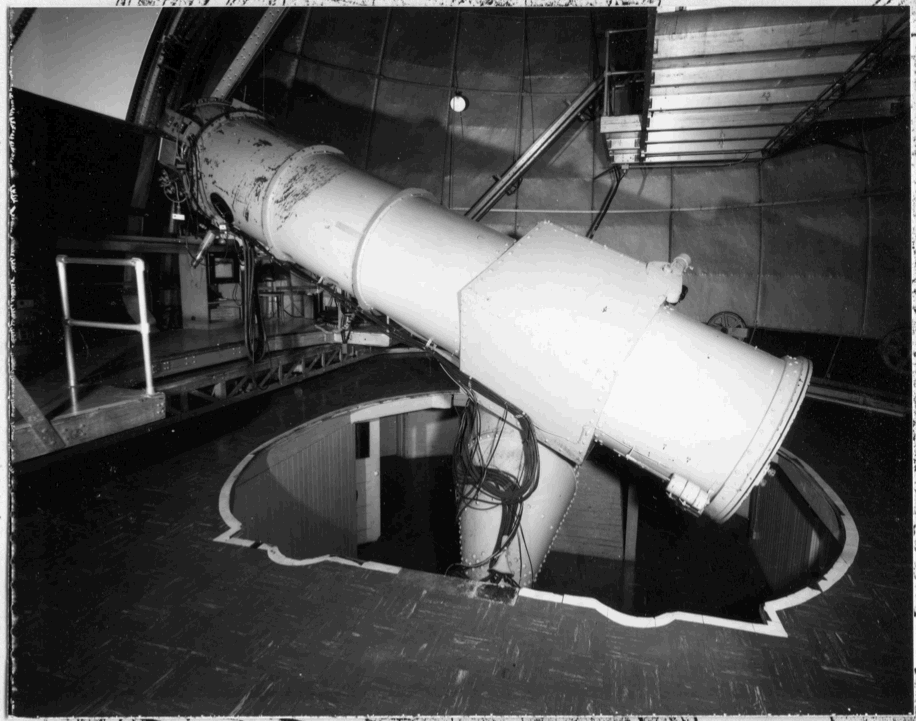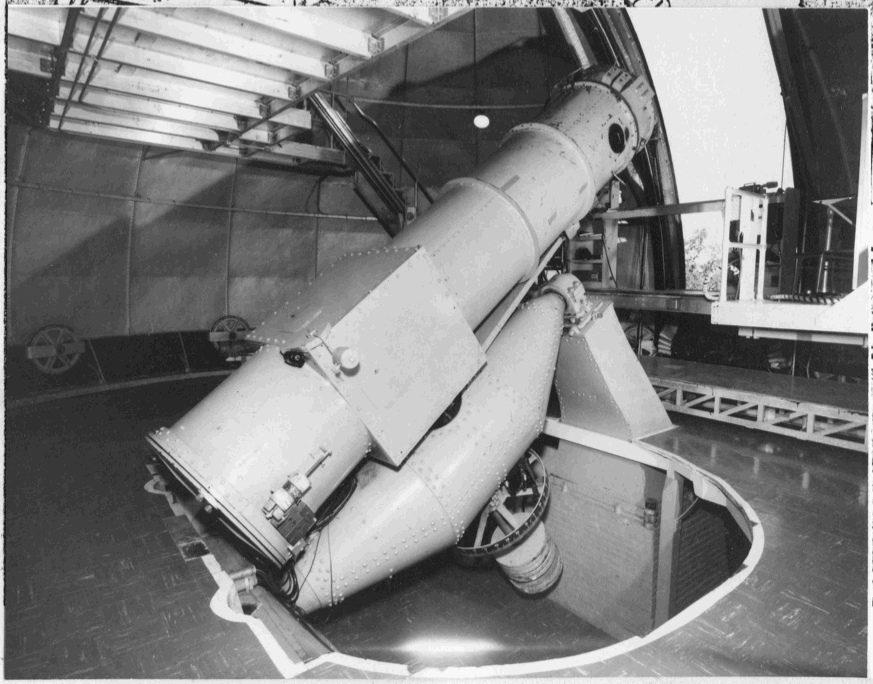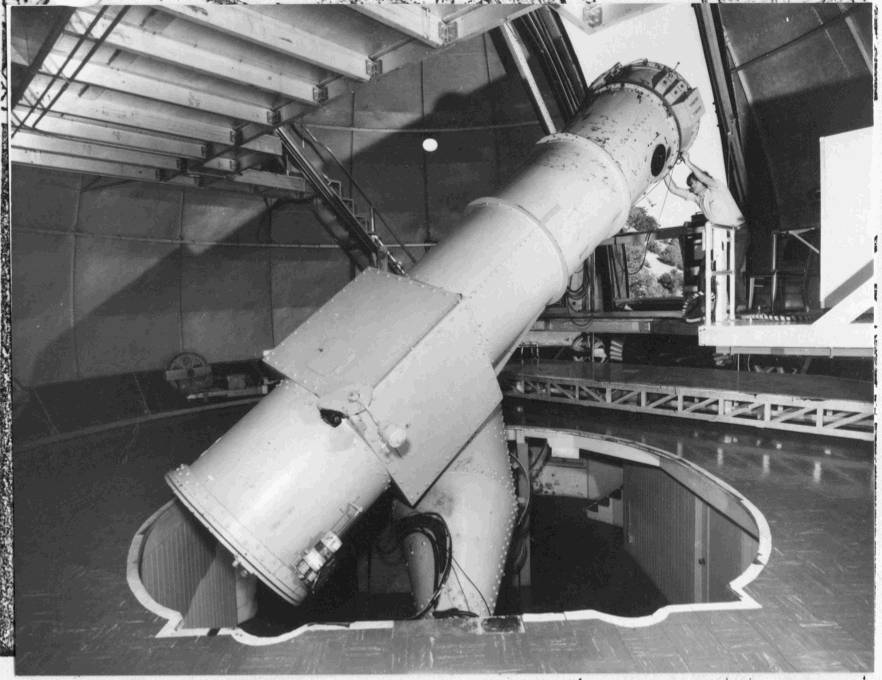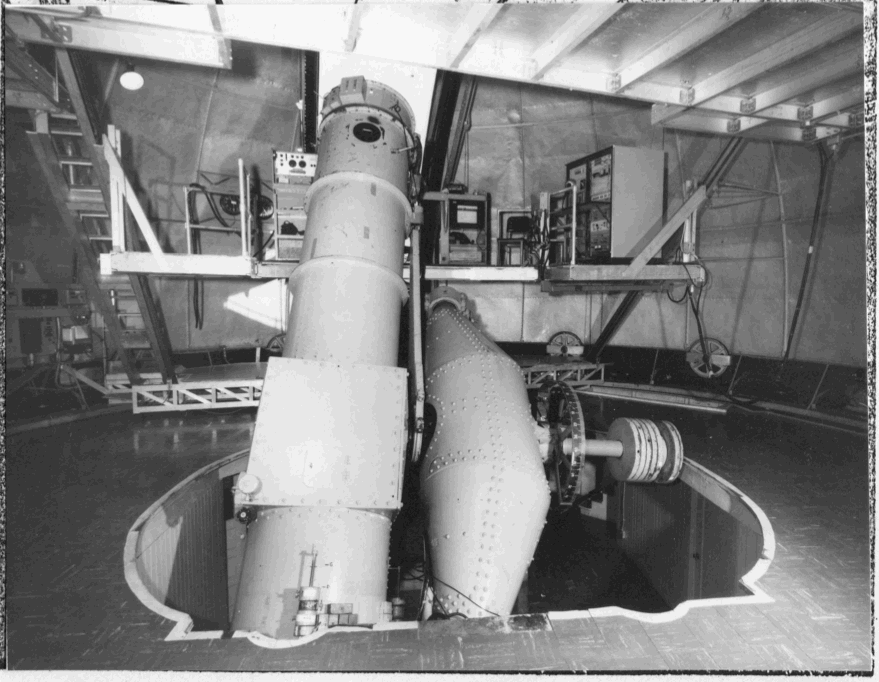|
If you wish to observe in the north, you must do something to make
the eyepieces accessible, since they are on the south side of the tube
when the tube is on the east side of the polar axle. You have two
choices. You may rotate the head of the telescope, but for some
configurations (e.g., the scanner) this is somewhat inconvenient
because of the many cables which tend to get hung up during the
rotation. Or you may "reverse the telescope," which means to move the
tube from the east to the west side of the polar axle. One effect of
this maneuver is to rotate the entire tube 180 degrees clockwise about
its long axis so the eyepieces are on the north side.
Reversal is most safely done with the dome lights on, and lights are
therefore recommended as part of the normal procedure. The reason is
that care must be exercised to avoid pulling out cables, especially on
the many protuberances of the north polar axle and north pier. Be
careful also not to let the cables break the north pier light.
To reverse the telescope the dome is moved from south through west as
the the telescope is brought down to nearly six hours west at the
equator, so it is nearly parallel to the floor, and lying across the
top of and perpendicular to the polar axle (Fig. 22). (Do not
actually go to a zenith distance greater than 75 degrees or the mirror
may tip and a supporting pad may fall out - it has happened and tends
to ruin the rest of your run since a good focus is then impossible.)
Next, as you rotate the dome west through north, rotate the telescope
tube about the declination axle only, so that when the dome is north
the tube is right on top of and parallel to the polar axle (Fig. 23).
Continue to rotate about only the dec axle for another 30 degrees or
so toward the east to get a large enough angle between the tube and
the polar axle so you have some leverage, then push the tube to as to
rotate the polar axle toward the west (Fig. 24). This will bring the
telescope down on the west side of the polar axle (Fig. 25) and
reversal is complete.
In addition to the hazard pointed out above concerning the cables, be
careful not to start any movement in RA when the tube is parallel or
nearly parallel to the polar axle, because you may have insufficient
leverage to stop such a movement. This is especially true if the
telescope is improperly balanced.
Many observers experience some disorientation the first time they use
the Crossley, particularly during reversal. The polar axle provides a
ready reference since the high (north) end always points toward
Polaris. Remember to use the inside scale of the RA hours dial when
the telescope is reversed. Any time you get confused about which
scales to use or which way to read them, simply move the telescope a
small amount in a predetermined sense, say north and west, and notice
which scales indicate the motion correctly.
Although reversal perhaps sounds complicated, after you've done it
once or twice it's easy and you will probably find that with some
instrument configurations it's faster than fighting tight cables to
rotate the head.
|
 |

Figure 22

Figure 23

Figure 24

Figure 25
|